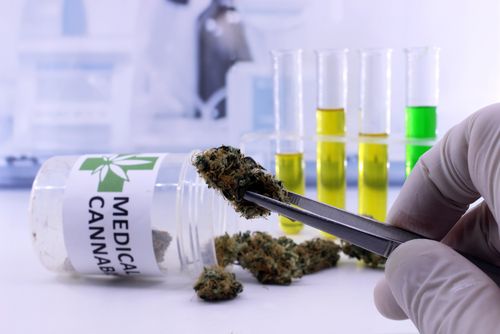Cannabidiol (CBD) — the active ingredient in Epidiolex — was found to bind to and block the opening of the sodium channel protein associated with seizures in people with Lennox-Gastaut syndrome (LGS), a study has shown.
The findings describe the molecular details of how CBD works to block sodium channels to suppress seizures.
The study, “Cannabidiol interactions with voltage-gated sodium channels,” was published in the journal Structural Biology and Molecular Biophysics.
Epidiolex is an oral CBD therapy developed by GW Pharmaceuticals; it is approved to treat seizures in patients with LGS as well as Dravet syndrome.
Despite mounting evidence of the effectiveness of CBD for treating epileptic conditions, the molecular basis for its effects remains unclear.
Studies have suggested that CBD both blocks and stabilizes proteins known as voltage-gated sodium channels (Navs), which allow the passage of sodium ions across cell membranes, generating electrical signaling. Mutations in human Navs have been associated with epilepsy, but also pain and heart conditions.
“These channels are among the proteins through which some pain medications (such as lidocaine) work to block pain sensations,” co-author Peter Ruben, PhD, professor at Simon Fraser Univerity (SFU) in Canada, said in a press release.
However, how CBD and Navs directly interact has not been described at a molecular level so far.
Now, Ruben, with colleagues at the University of London in the U.K., have determined the atomic-level details of CBD bound to Nav and conducted functional experiments to support their findings.
Given the difficulties directly studying the molecular details of proteins like human Nav, the team chose a Nav protein from a bacterial species called Magnetococcus marinus (NavMs) as a model system. The NavMs structure is almost identical to human Nav, with a highly similar function, ion-conductance, and medicine binding properties.
NavMs channels in cell membranes are composed of four identical NavMs proteins, together forming a pore across the membrane that is either open to allow ion flow, or closed depending on the voltage difference across the membrane (voltage-gated).
The analysis revealed that four CBD molecules bound to an identical region in between each of the four individual Nav proteins near the channel’s opening.
Each CBD molecule protruded into the pore opening, blocking the passage of sodium ions, which “provides a mechanism for channel inhibition as well as a basis for understanding the concentration-dependence of the drug effects,” the researchers wrote.
“The location of the CBD-binding site is very close to the locations of the binding sites that have been identified for analgesic[s],” they added.
Whole-cell tests measuring the flow of sodium ions showed CBD suppressed ion passage through NavMs channels, which supported the “proposed interaction inside the pore depicted in the NavMs structure as being functionally relevant,” the researchers further explained.
These results were supported by reduced CBD binding to a mutant form of NavMs in which one of its amino acids (the building blocks of proteins) that directly binds to CBD was changed to a different amino acid, “correlating its location with a functional effect.”
In humans, nine sodium channel subtypes designated hNav1.1 to hNav1.9 have been identified, in which hNav1.1 is associated with epilepsy. However, to date, there is no structural information for this particular subtype.
Due to the high degree of similarity between hNav1.1, hNav1.2, and NavMs in the CBD binding site, the team created a model of hNav1.1 based on structural data from hNav1.2, which suggested CBD would interact similarly with hNav1.1 as NavMs from this study.
Non-psychoactive CBD has a similar molecular structure to THC, the main psychoactive compound found in cannabis. The CBD structure bound to NavMs was examined to find clues underlying the different functional effects of the two compounds.
Placing THC in the same position as CBD showed that THC is missing a critical interaction with a NavMs amino acid that interacts with CBD, which may account for “differences in functional effects … of the two compounds on voltage-gated sodium channels,” the researchers wrote.
Studies have suggested that CBD also may be an activator of a different membrane channel that allows the flow of positively charged ions such as sodium and calcium called TRPV2. An inspection of the TRPV2 protein structure bound to CBD found a similar binding pattern with NavMs, but with differences that accounted for “sodium channels being blocked by CBD, whilst TRPV2 channels appear to be activated by them.”
“In summary, this study has provided high-resolution structural evidence, along with functional studies, elucidating the molecular basis of the interactions of CBD, a drug recently approved for treatment of epilepsy, with a voltage-gated sodium channel target,” the researchers wrote.
“Now we can actually visualize how CBD docks within the sodium channel protein,” added co-author Reza Ghovanloo, PhD, at SFU.

